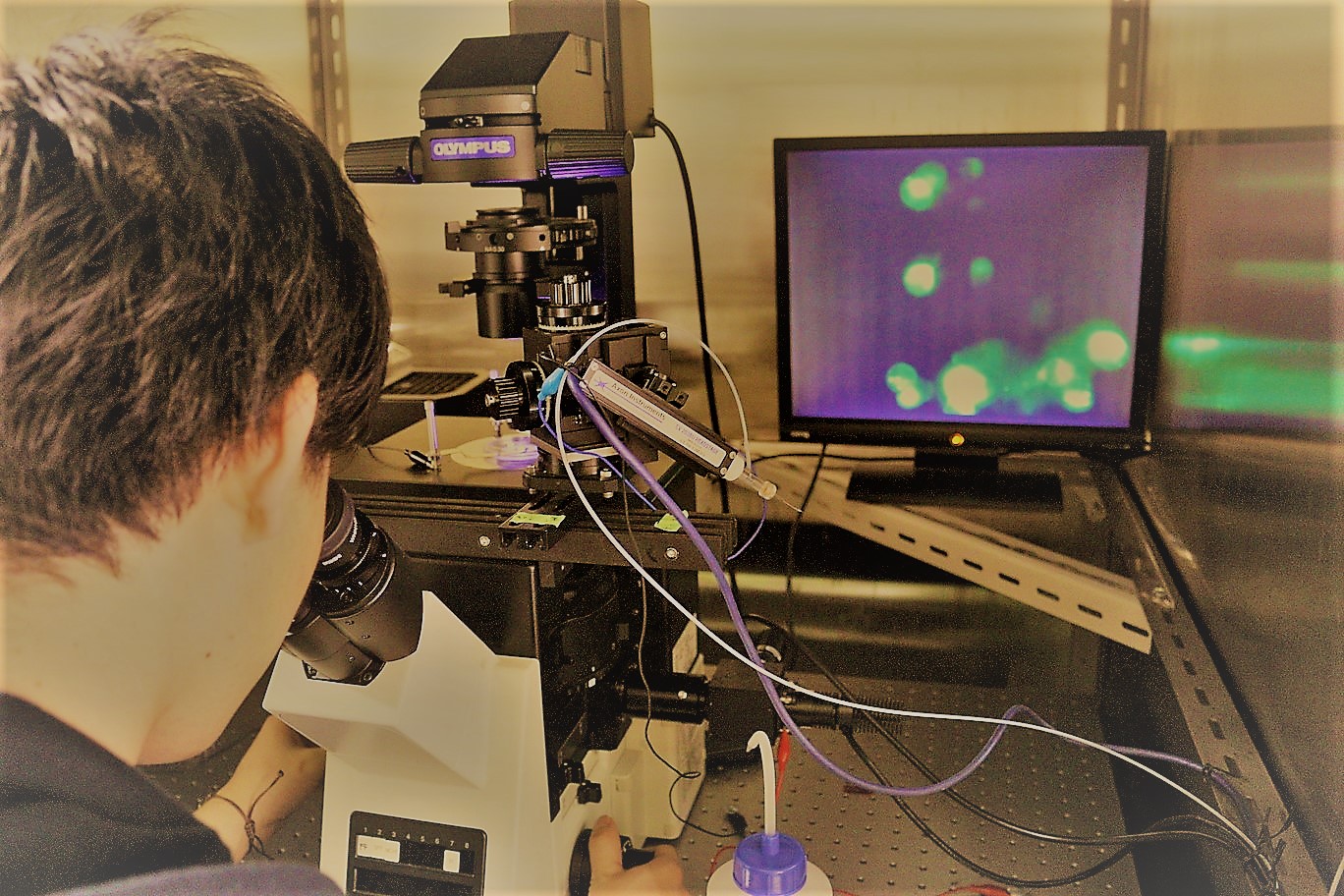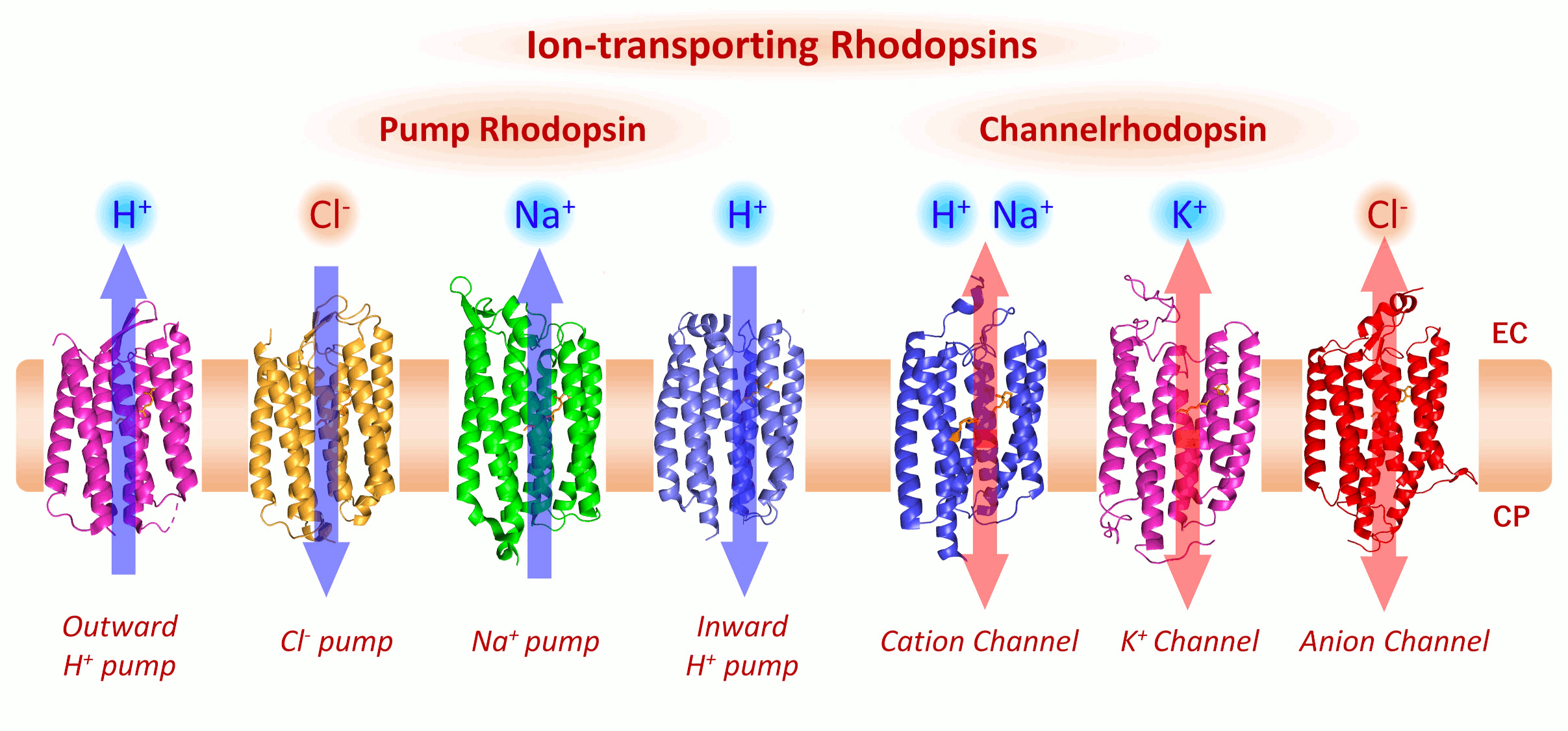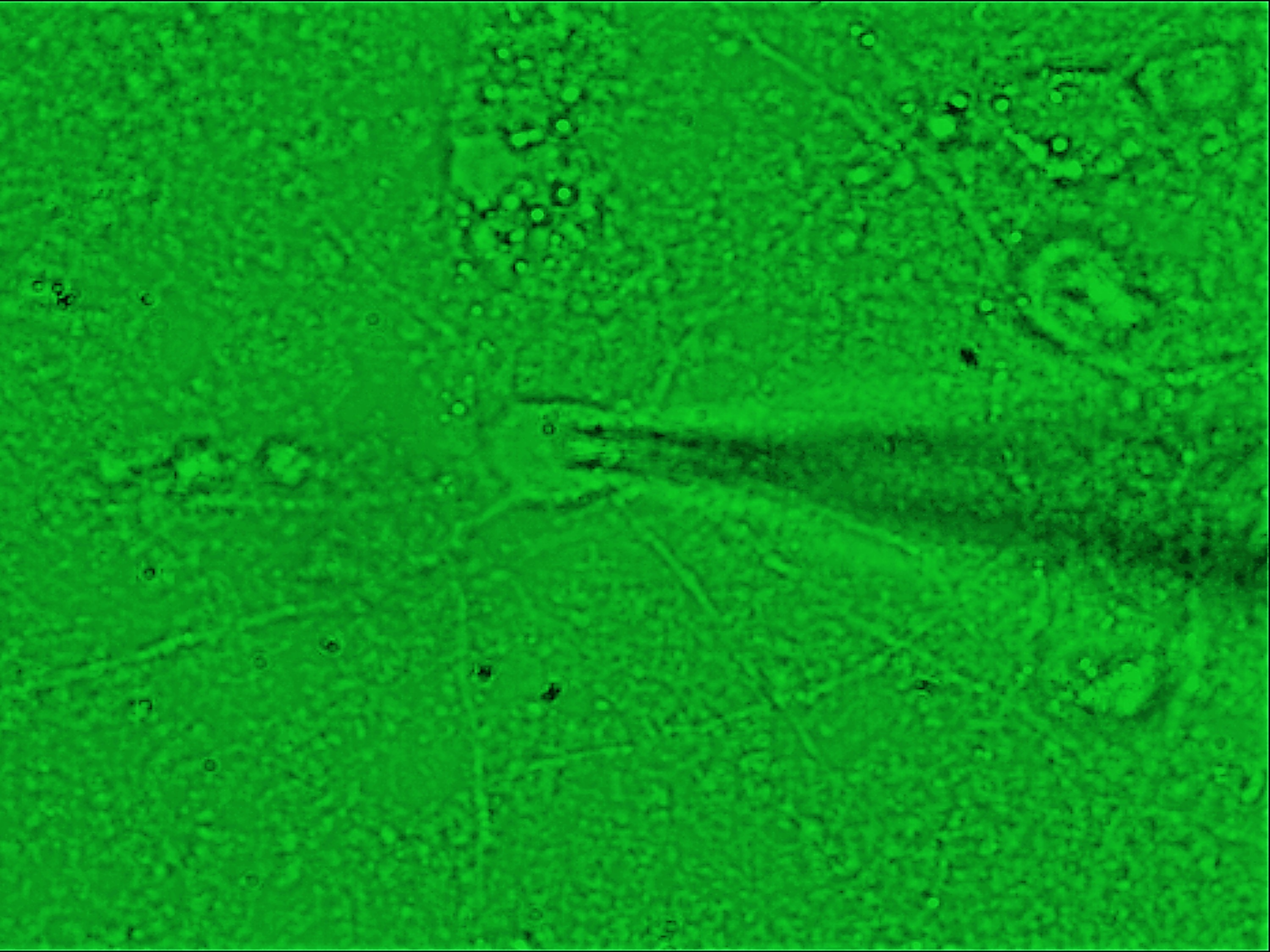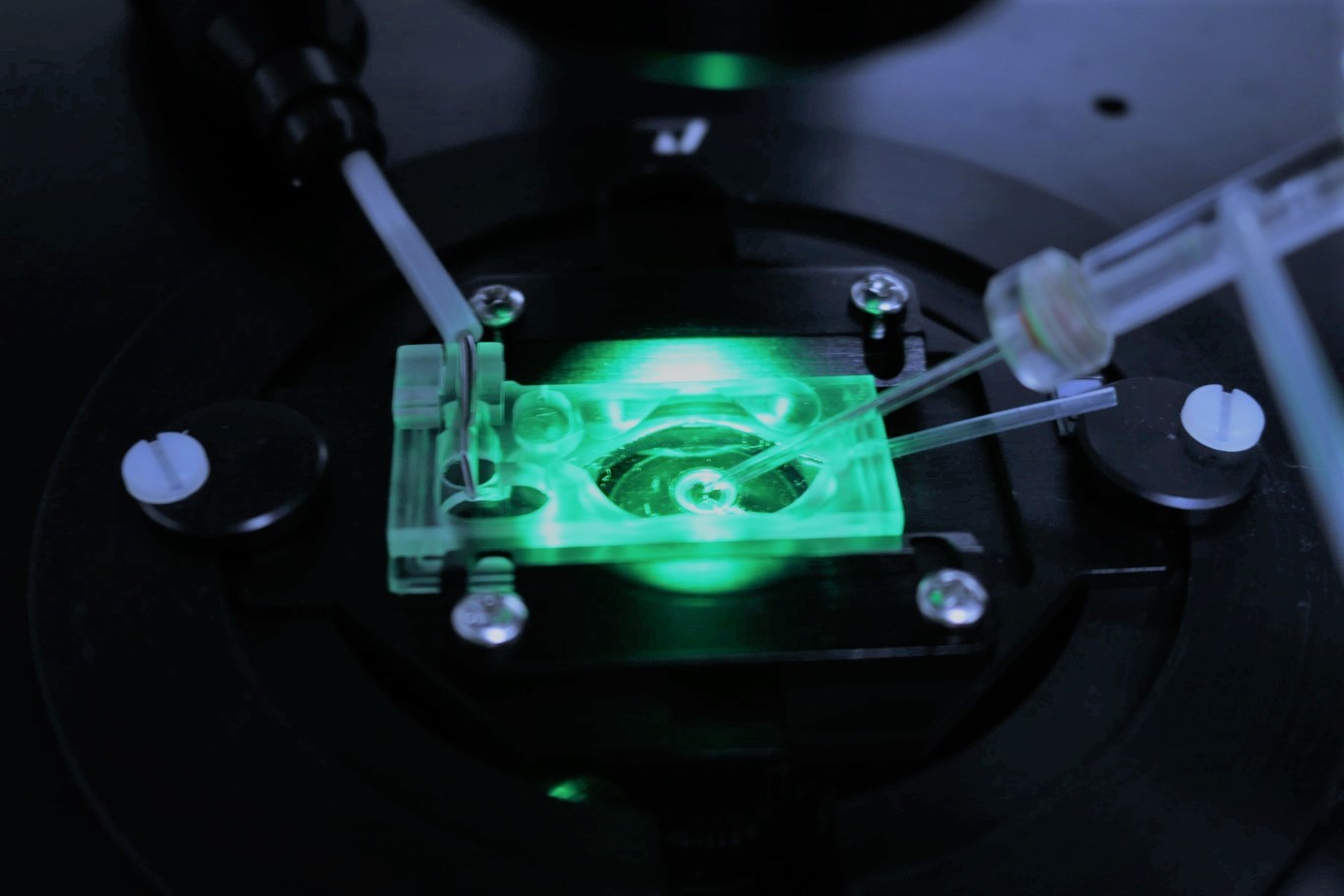Electrophysology
Functional Analysis of Rhodopsin Using Electrophysiological Methods
In our laboratory, we conduct detailed analyses of rhodopsin, a light-responsive molecule, using a variety of experimental techniques. Specifically, in addition to spectroscopic techniques such as infrared spectroscopy and transient absorption measurements, we employ electrophysiological approaches to elucidate the mechanisms of ion transport functions mediated by rhodopsin.
Measurement of Ion Transport Function Using Patch-Clamp Technique
The patch-clamp technique involves expressing specific ion transporters (ion channels or ion pumps) in the cell membrane and electrically quantifying their ion transport dynamics. The key feature of this technique is the ability to independently manipulate the ion environment inside and outside the cell membrane, as well as precisely control the membrane potential. Furthermore, the patch-clamp method allows the observation of ion channel opening/closing and ion transport speeds with a time resolution of 10 microseconds, enabling the precise tracking of the dynamic behavior of rhodopsin molecules.

Types and Functions of Rhodopsin
Rhodopsin is a membrane protein that utilizes light to transport ions, and it can primarily be classified into two types: Ion Pump-Type Rhodopsin These rhodopsins use light energy to actively transport ions across membranes. Notable examples include bacteriorhodopsin (BR), which transports protons (H⁺), and halorhodopsin (HR), which transports chloride ions (Cl⁻). Since 2000, new types of ion pump-type rhodopsins have been discovered in various organisms, especially in marine bacteria, with molecules similar in function to BR and HR. In 2013, our laboratory made a pioneering discovery of a new rhodopsin, "NaR," which can simultaneously transport sodium ions (Na⁺) and protons, reporting it to the world. Furthermore, by discovering inward proton pumps "PoXeR" and "SzR," which were previously thought to be non-existent in nature, we achieved groundbreaking, paradigm-shifting findings.

Ion Channel-Type Rhodopsin
These rhodopsins open ion channels in response to light stimulation, allowing ions to pass selectively. Notably, in the early 2000s, channelrhodopsins 1 (ChR1) and 2 (ChR2) were discovered in the green alga Chlamydomonas, and they are widely used as optogenetic tools for controlling neuronal cells. In our laboratory, we have discovered novel cation channel-type rhodopsins such as GtCCR4, GtCCR5, and KnChR from different algae species.
Research Goals and Future Directions
Rhodopsin exists in a variety of forms, each with the ability to transport specific ions. Our laboratory is focused on elucidating the molecular mechanisms by which these rhodopsins selectively transport ions, using the patch-clamp technique. Additionally, we are performing performance evaluations of these rhodopsins as optogenetic tools for use in neuronal cells and advancing research toward applications in neuroscience and medicine.
